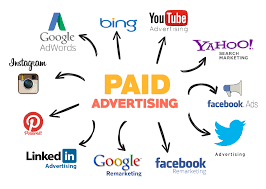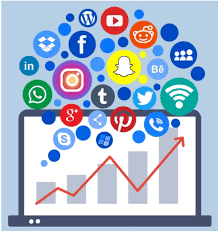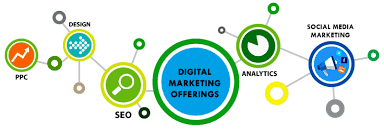The Power of Paid Media Marketing
In today’s digital landscape, businesses are constantly seeking effective ways to reach their target audience and drive growth. One strategy that has proven to be highly impactful is paid media marketing. This article will explore the benefits and potential of paid media marketing, and why it should be an integral part of your overall marketing strategy.
What is Paid Media Marketing?
Paid media marketing refers to the practice of promoting your brand, products, or services through paid advertising channels. These channels can include search engine advertising (such as Google Ads), social media advertising (like Facebook Ads), display advertising, sponsored content, and more.
The Benefits of Paid Media Marketing
Enhanced Visibility: Paid media marketing allows you to quickly gain visibility in front of your target audience. By leveraging popular platforms with vast user bases, you can ensure that your brand gets noticed by potential customers.
Targeted Reach: With paid media marketing, you have the ability to precisely target your ads based on various demographic factors such as age, location, interests, and browsing behavior. This ensures that your message reaches the right people at the right time.
Increased Website Traffic: By strategically placing ads on relevant platforms, you can drive a significant amount of traffic to your website. This increased traffic opens up opportunities for lead generation and conversions.
Measurable Results: One of the key advantages of paid media marketing is the ability to track and measure the performance of your campaigns. This allows you to make data-driven decisions, optimize your strategies, and maximize your return on investment (ROI).
Getting Started with Paid Media Marketing
To make the most out of paid media marketing, it’s important to have a well-defined strategy:
- Define Your Goals: Determine what you want to achieve through paid media marketing, whether it’s increasing brand awareness, driving website traffic, or generating leads.
- Identify Your Target Audience: Understand who your ideal customers are and create detailed buyer personas. This will help you tailor your ads and messaging to resonate with your target audience.
- Select the Right Platforms: Research and choose the advertising platforms that align with your business goals and target audience. Each platform has its own strengths and features.
- Create Compelling Ad Content: Craft engaging ad copy, captivating visuals, and strong calls-to-action that entice users to click on your ads.
- Monitor and Optimize: Continuously monitor the performance of your campaigns. Analyze data, identify trends, and make adjustments as needed to improve results.
The Future of Paid Media Marketing
Paid media marketing continues to evolve alongside advancements in technology and consumer behavior. As new platforms emerge and user preferences change, businesses must stay agile and adapt their strategies accordingly.
In conclusion, paid media marketing offers immense potential for businesses looking to expand their reach, drive targeted traffic, and achieve their marketing goals. By leveraging the power of paid advertising channels, you can effectively connect with your audience and fuel the growth of your business.
Crafting a Robust Paid Media Strategy: An Overview
The Three Pillars of Paid Media Explained
4. Understanding the Role of Paid Media in Social Media Marketing
- What is an example of paid social media marketing?
- What is a paid media strategy?
- What are the 3 pillars of paid media?
- What is paid media in social media marketing?
- What is paid digital marketing?
- What paid media advertising?
- What are examples of paid media?
What is an example of paid social media marketing?
Paid social media marketing encompasses various strategies and techniques to promote a brand or business through paid advertising on social media platforms. An example of paid social media marketing is when a company creates targeted ads on platforms like Facebook, Instagram, or Twitter to reach a specific audience. These ads can be in the form of sponsored posts, display ads, video ads, or carousel ads that appear in users’ newsfeeds or timelines. By investing in paid social media marketing, businesses can effectively increase their brand visibility, engage with their target audience, and drive traffic to their website or specific landing pages.
What is a paid media strategy?
A paid media strategy refers to a carefully planned and executed approach to utilizing paid advertising channels in order to achieve specific marketing objectives. It involves determining the platforms and channels that best align with your target audience, creating compelling ad content, setting budgets, and monitoring performance. A well-defined paid media strategy ensures that your brand gets noticed by the right people at the right time, driving increased visibility, targeted reach, and measurable results. By strategically investing in paid media, businesses can effectively enhance their online presence, drive traffic to their websites, and ultimately achieve their marketing goals.
What are the 3 pillars of paid media?
The three pillars of paid media are strategy, targeting, and measurement. Strategy involves developing a well-defined plan that aligns with your business goals and target audience. It includes determining the platforms to use, budget allocation, and ad placement strategies. Targeting focuses on reaching the right audience by leveraging demographic data, interests, and browsing behavior. This ensures that your ads are seen by those most likely to engage with your brand. Measurement involves tracking and analyzing the performance of your campaigns to assess their effectiveness. It allows you to make data-driven decisions, optimize your strategies, and maximize your return on investment (ROI). These three pillars work together to create successful paid media campaigns that drive results for your business.
What is paid media in social media marketing?
Paid media in social media marketing refers to the practice of promoting your brand, products, or services on social media platforms through paid advertising. It involves allocating a budget to create and distribute targeted ads to reach a wider audience beyond your organic reach. Paid media allows businesses to leverage the immense user bases and advanced targeting capabilities of social media platforms to increase visibility, drive website traffic, generate leads, and ultimately achieve their marketing objectives. By investing in paid media, businesses can effectively amplify their social media presence and engage with their target audience in a more strategic and impactful way.
What is paid digital marketing?
Paid digital marketing refers to the practice of promoting products, services, or brands through paid advertising channels in the digital realm. It involves investing financial resources to strategically place advertisements on various online platforms such as search engines, social media networks, websites, and mobile applications. Paid digital marketing allows businesses to target specific demographics, interests, and behaviours to reach their desired audience effectively. By leveraging these paid advertising channels, companies can enhance their online visibility, drive website traffic, generate leads, and ultimately achieve their marketing objectives in a measurable and cost-effective manner.
What paid media advertising?
Paid media advertising refers to the practice of promoting your brand, products, or services through paid channels such as search engines, social media platforms, display networks, and sponsored content. It involves investing in advertisements to reach a wider audience and increase visibility. By strategically placing targeted ads on popular platforms, businesses can effectively capture the attention of their target market and drive traffic to their websites or landing pages. Paid media advertising offers businesses the opportunity to precisely target their audience based on various demographic factors and track the performance of their campaigns, allowing for data-driven decision-making and optimization. It is a powerful tool in today’s digital landscape for businesses seeking to enhance their online presence and achieve measurable results.
What are examples of paid media?
Paid media encompasses various advertising channels that require payment to promote your brand, products, or services. Some common examples of paid media include search engine advertising, such as Google Ads, where you can bid on keywords to display your ads prominently in search engine results. Social media advertising, like Facebook Ads and Instagram Ads, allows you to target specific demographics and interests to reach your desired audience. Display advertising involves placing visual ads on websites and mobile apps. Sponsored content, such as native advertising or influencer collaborations, involves paying for promotional content on platforms that resonate with your target market. These are just a few examples of the diverse range of paid media options available to businesses seeking to enhance their visibility and drive results in today’s digital landscape.




